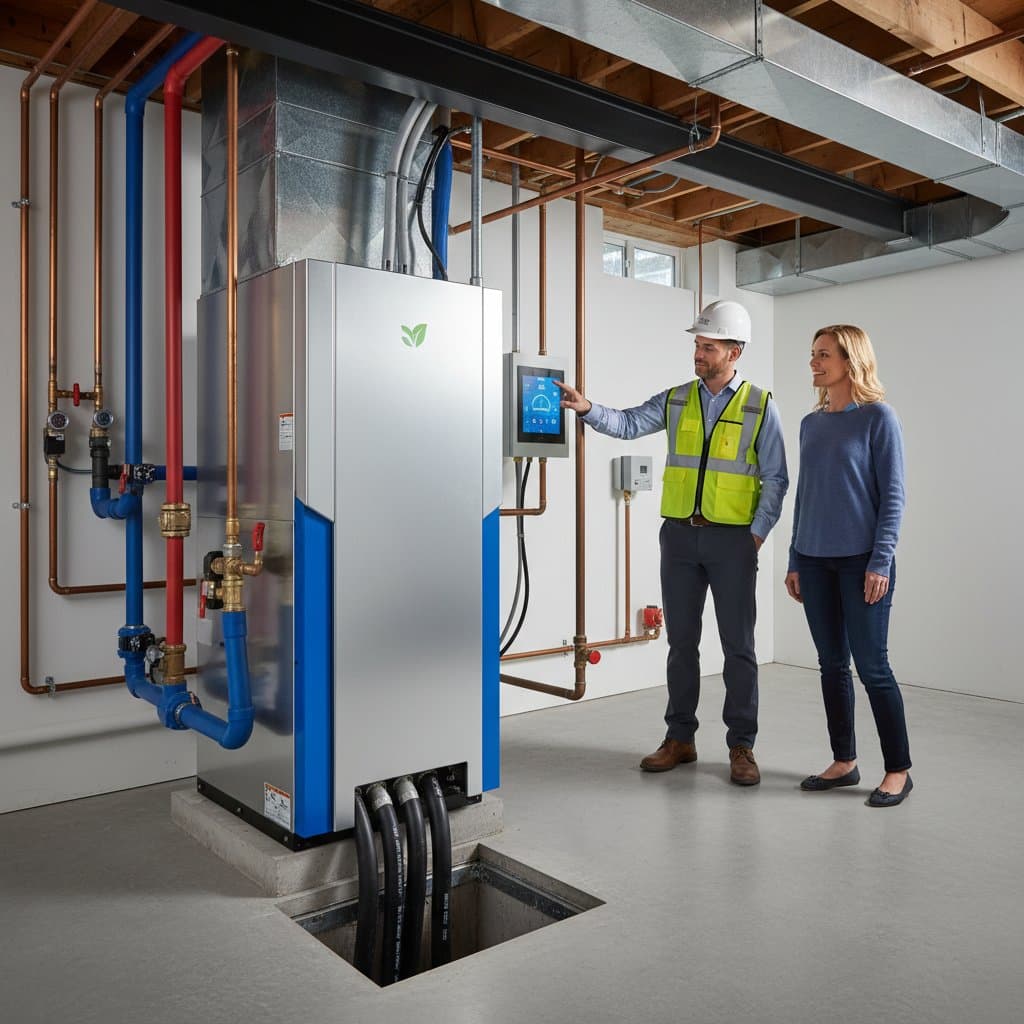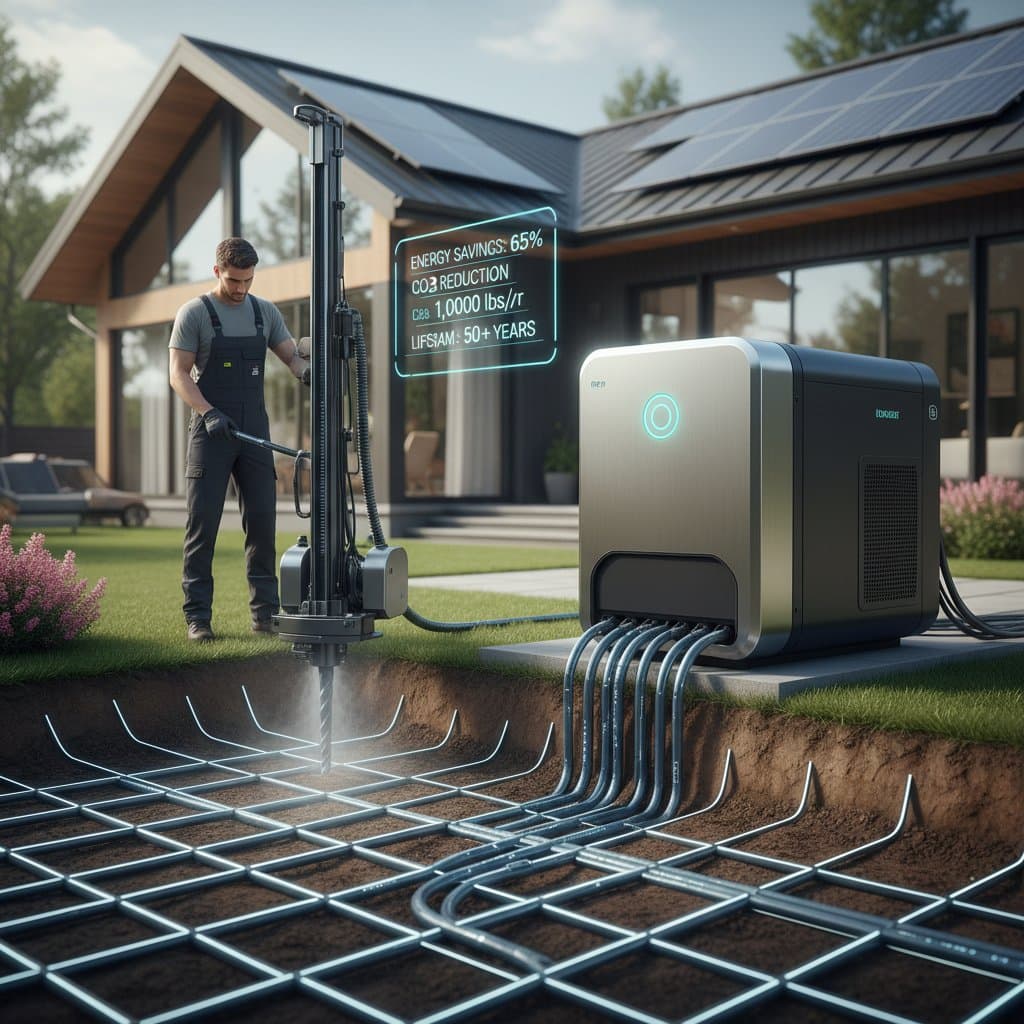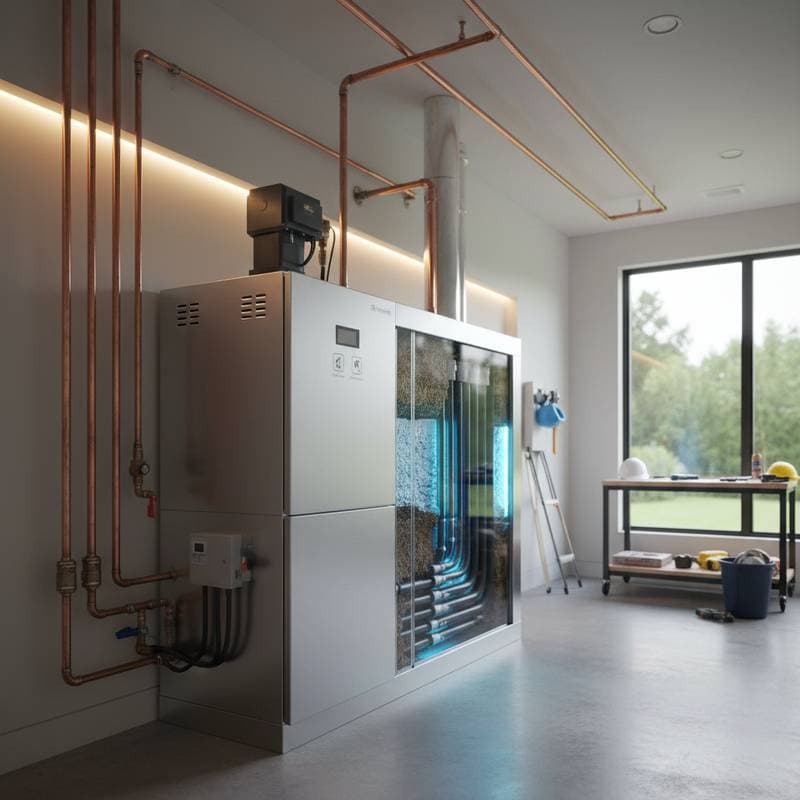Key Points
- Geothermal HVAC systems harness the earth's constant underground temperature to provide efficient heating and cooling for homes.
- These systems lower utility expenses by 40 to 70 percent relative to conventional HVAC options.
- Initial installation expenses exceed those of standard systems, yet payback occurs within five to ten years based on local energy rates and household consumption.
- Maintenance needs remain minimal, with indoor components lasting over 20 years and ground loops enduring up to 50 years.
- Beyond cost reductions, geothermal technology advances environmental goals by curbing emissions and promoting sustainable energy practices.
Addressing the Need for Efficient Home Comfort
Homeowners everywhere face the challenge of maintaining comfortable indoor environments while managing escalating energy costs. This issue affects urban apartments and countryside homes alike, turning energy efficiency into an essential priority for both budgets and the environment. The core dilemma lies in finding reliable solutions that deliver consistent comfort without excessive resource use.
Geothermal HVAC systems present a robust solution. By drawing on the earth's stable subsurface temperatures, these systems outperform traditional air-dependent units in efficiency. This method not only enhances daily living but also secures financial and ecological advantages over time.
Understanding Geothermal System Operations
Geothermal HVAC relies on the earth's relatively constant temperature, which hovers between 45 and 75 degrees Fahrenheit at depths of four to six feet, varying by location. A closed-loop network of pipes buried underground circulates a fluid mixture, typically water and antifreeze. During cold months, the fluid extracts warmth from the soil and delivers it inside; in warmer seasons, it absorbs excess indoor heat and dissipates it into the ground.
A ground-source heat pump, located indoors, facilitates this heat transfer process. The pump connects to existing ductwork or underfloor heating to circulate conditioned air or water. Since the system relocates existing heat rather than producing it via fuel burning, it consumes significantly less electricity.
Essential Efficiency Metrics
- Geothermal units deliver 300 to 500 percent efficiency, generating three to five times more heating or cooling output than the electricity input.
- The ground's thermal stability ensures performance unaffected by outdoor extremes, unlike air-source alternatives.
- Without external compressors, these systems operate quietly, often below 50 decibels, comparable to a soft conversation.
Evaluating the Economic Impact
The primary barrier to geothermal adoption involves upfront costs, which range from $15,000 to $40,000 for a standard home installation. Factors such as lot size, soil type, and loop design influence this figure. For comparison, a conventional HVAC replacement typically costs $5,000 to $12,000.
Operational savings quickly offset the difference, with reductions of 40 to 70 percent on heating and cooling bills. In regions with high electricity rates, such as the Northeast or California, annual savings might reach $1,500 or more. Over 20 years, cumulative benefits often exceed $30,000, especially as utility prices rise 3 to 5 percent annually.
Financial Overview
- Payback timeline: Five to ten years, accelerated by federal tax credits up to 30 percent of installation costs.
- Lifetime savings: Up to 70 percent lower running expenses compared to traditional systems.
- Durability factors: Indoor heat pumps last 20 to 25 years; underground loops persist for 40 to 50 years with minimal intervention.
Homeowners intending to remain in their residence for a decade or longer find these economics compelling, particularly when paired with low-interest green loans.
Benefits for the Environment and Indoor Health
Conventional HVAC often depends on gas furnaces or air conditioners using potent greenhouse gases like hydrofluorocarbons. Geothermal systems sidestep these issues by relying on electricity for heat transfer, slashing carbon footprints by 50 percent or more. In electric-powered homes, integration with solar panels can achieve near-zero emissions.
Health improvements stem from precise climate control. These systems regulate humidity between 30 and 50 percent, deterring allergens and mold. The lack of outdoor units prevents intake of outdoor pollutants, fostering cleaner air through advanced filtration options.
For families prioritizing wellness and planetary health, geothermal represents a tangible step forward in reducing reliance on fossil fuels while enhancing living conditions.
Adapting Designs to Specific Sites
Geothermal installations prove versatile across climates, from arid deserts to humid tropics. Engineers customize loop types to match site constraints, ensuring optimal performance.
Horizontal loops spread pipes in shallow trenches, ideal for spacious yards with soft soil. Vertical loops drill deeper boreholes, fitting compact urban properties or hard ground. For waterfront homes, open-loop systems draw from ponds or wells, minimizing digging.
Site assessments by certified professionals analyze soil conductivity, water tables, and space availability. This tailored approach guarantees efficiency ratings above 400 percent, regardless of regional weather patterns.
Ensuring Durability and Ease of Upkeep
Geothermal components excel in longevity due to their protected placement. Buried loops shield against frost, UV damage, and debris, requiring checks only every few years. Indoor units need annual filter replacements and fluid inspections, costing under $200.
This setup translates to fewer repairs and consistent output, even in temperatures below zero or above 100 degrees Fahrenheit. Property owners gain peace of mind, as reliable systems boost resale values by 5 to 10 percent in eco-conscious markets.
Over decades, the reduced service demands compound savings, making geothermal a low-hassle choice for long-term homeownership.
Steps to Implement Geothermal HVAC
Start the process with a consultation from a licensed geothermal specialist. Request a thermal load calculation to size the system accurately, followed by soil boring tests to confirm loop feasibility. Gather at least three bids from International Ground Source Heat Pump Association members to ensure quality and competitive pricing.
Explore funding through programs like the federal Investment Tax Credit or state rebates, which can cover 20 to 50 percent of costs. Energy-efficient mortgages allow inclusion in home loans, spreading payments over 15 to 30 years at favorable rates.
Post-installation, monitor performance via built-in diagnostics and schedule biennial tune-ups. This proactive approach maximizes efficiency and extends system life.
Realizing Enduring Home Efficiency
Geothermal HVAC transforms homes into efficient sanctuaries, blending comfort with fiscal prudence and ecological stewardship. Homeowners who invest in this technology position themselves for decades of reliable performance and substantial rewards. As energy demands evolve, these systems stand as a forward-thinking foundation for resilient living.









